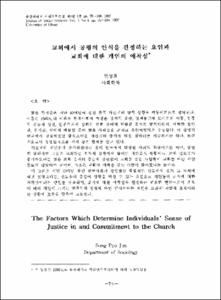예이츠의 象徵主義
- Alternative Title
- The Symbolism of W.B.Yeats
- Abstract
- 作家는, 特히 重要한 作家는 그때그때의 靈感에 의지하여 간헐적으로 作品活動을 하지 않는다. 부단한 執念과 一貫된 비죤을 가지고 能動的으로 靈感을 환기하여 꾸준히 作品活動을 하는 것이다. 이 글은 그러한 가정을 전제로 하여 쓰였다.
예이츠에게 있어서 詩를 쓰는 일은 象徵을 찾아내고 만들어내는 일이었다. 그의 방대한 산문과 구체적인 詩가 이것을 증명하고 있다. 따라서 예이츠의 詩의 世界에 접근하는 가장 올바른 길은 그의 象徵主義를 극명하고 이해하는데 있다.
예이츠의 象徵主義는 原型論的 象徵에서 출발했는데, 이것이 深化와 擴大過程을 거쳐 리얼리즘까지 포함하고, 리얼리즘을 상징화하는 경지로 성숙하는 운동패턴을 이루었다. 이 글에서는 그러한 운동패턴을 고찰하였다.
It has generally been the orthodox position to divide Yeats's poetic career into two periods and to look upon his earlier work as quite inferior to his later work as if they had no interrelation with each other. But I have found, with aids of some Yeats's scholars, that we can seek for the continuity or integrity of his whole poetry in terms of symbolism, which I believe offers a most illuminating clue to his poetic achievements.
Yeats's symbolism has two main characteristics; evocative and unifying. His symbolism was concerned primarily with the hidden wisdom coming down from the very beginning of the history. But his symbolism, which aimed at the unity of being as the final goal, was extended to include the actuality. The actual experiences and events were used as poetic symbols which could reveal the hidden reality, because he thought they are the forms which are brought into being by touch with the great memory.
By symbolism he could enhance a personal experience up to an experience of universal significance. By symbolism he could also make the typical concrete and personal. It is thus by symbolism that he could give the unified form both to the dualistic struggle of ideality and actuality and to the conflict of universality and individuality.
It has generally been the orthodox position to divide Yeats's poetic career into two periods and to look upon his earlier work as quite inferior to his later work as if they had no interrelation with each other. But I have found, with aids of some Yeats's scholars, that we can seek for the continuity or integrity of his whole poetry in terms of symbolism, which I believe offers a most illuminating clue to his poetic achievements.
Yeats's symbolism has two main characteristics; evocative and unifying. His symbolism was concerned primarily with the hidden wisdom coming down from the very beginning of the history. But his symbolism, which aimed at the unity of being as the final goal, was extended to include the actuality. The actual experiences and events were used as poetic symbols which could reveal the hidden reality, because he thought they are the forms which are brought into being by touch with the great memory.
By symbolism he could enhance a personal experience up to an experience of universal significance. By symbolism he could also make the typical concrete and personal. It is thus by symbolism that he could give the unified form both to the dualistic struggle of ideality and actuality and to the conflict of universality and individuality.
- Issued Date
- 1970
- Type
- Research Laboratory
- Alternative Author(s)
- Hong,Ki Chang
- Publisher
- 연구논문집
- Language
- kor
- Rights
- 울산대학교 저작물은 저작권에 의해 보호받습니다.
- Citation Volume
- 1
- Citation Number
- 1
- Citation Start Page
- 61
- Citation End Page
- 73
- Appears in Collections:
- Research Laboratory > University of Ulsan Report
- 파일 목록
-
-
Download
 000002023908.pdf
기타 데이터 / 1.56 MB / Adobe PDF
000002023908.pdf
기타 데이터 / 1.56 MB / Adobe PDF
-
Items in Repository are protected by copyright, with all rights reserved, unless otherwise indicated.